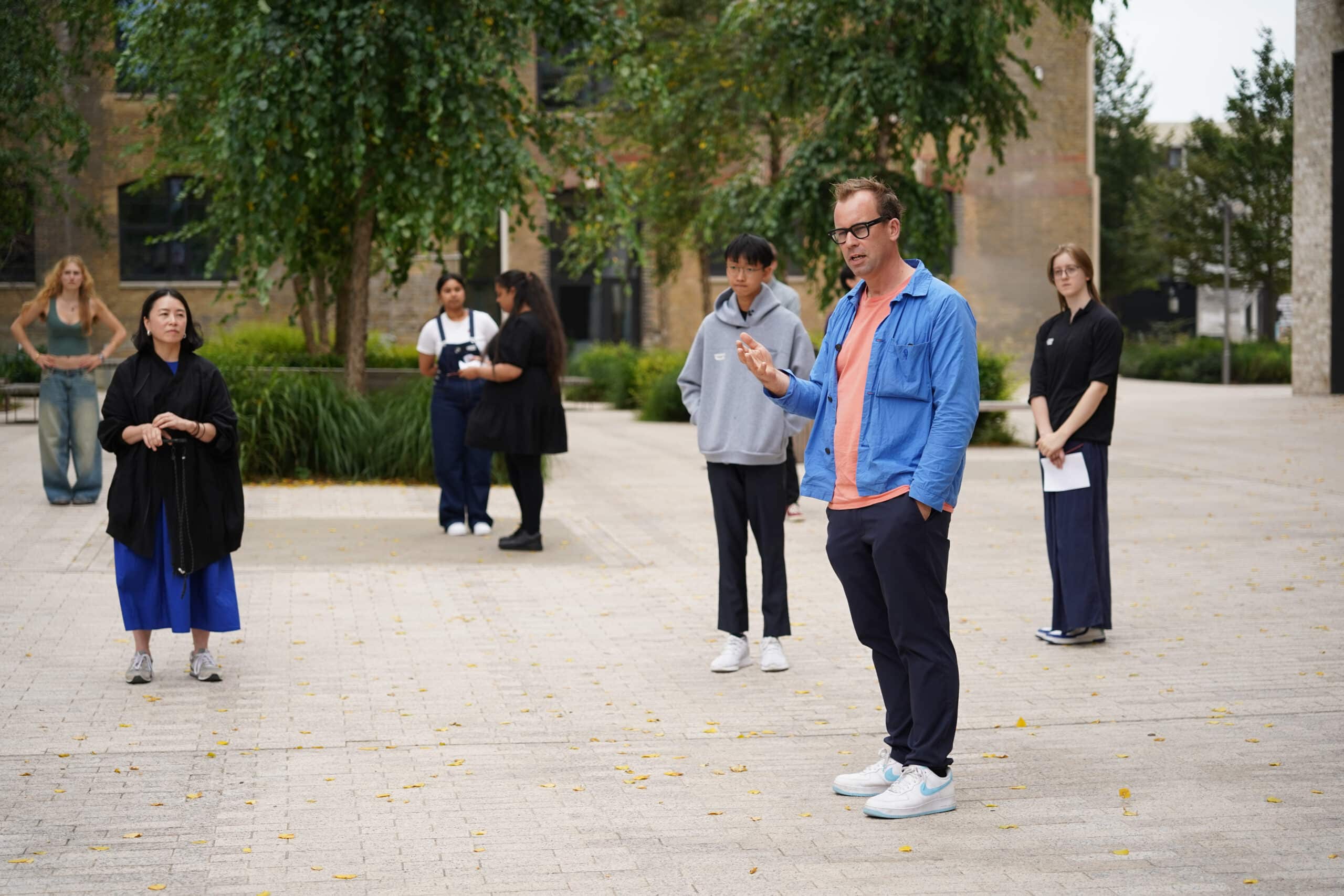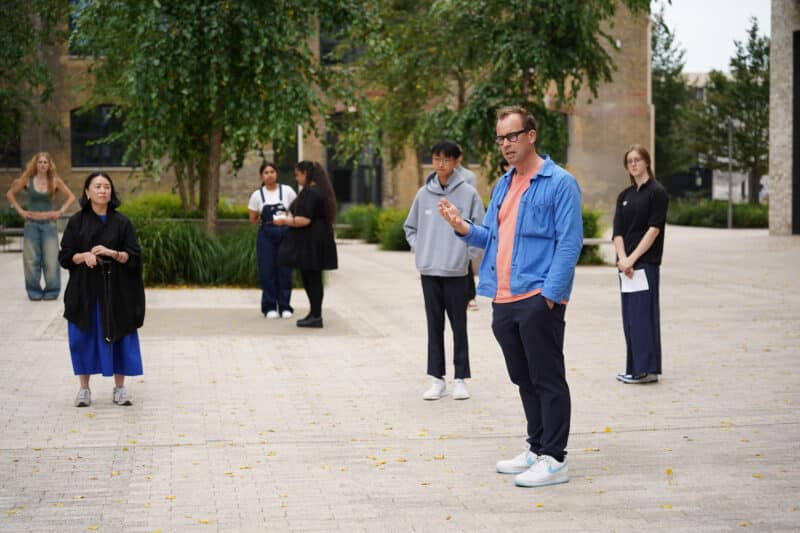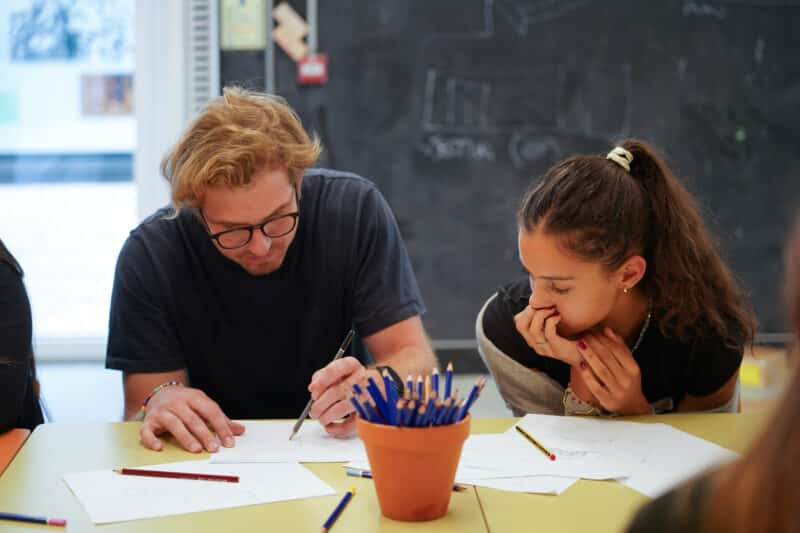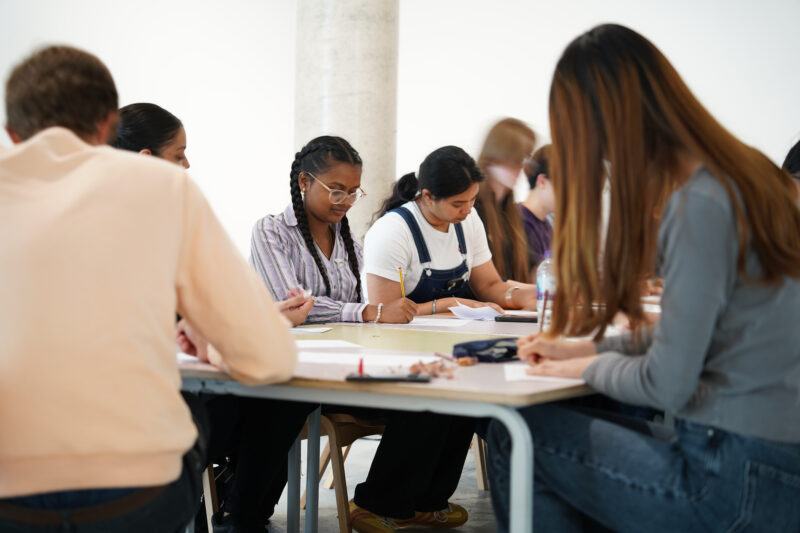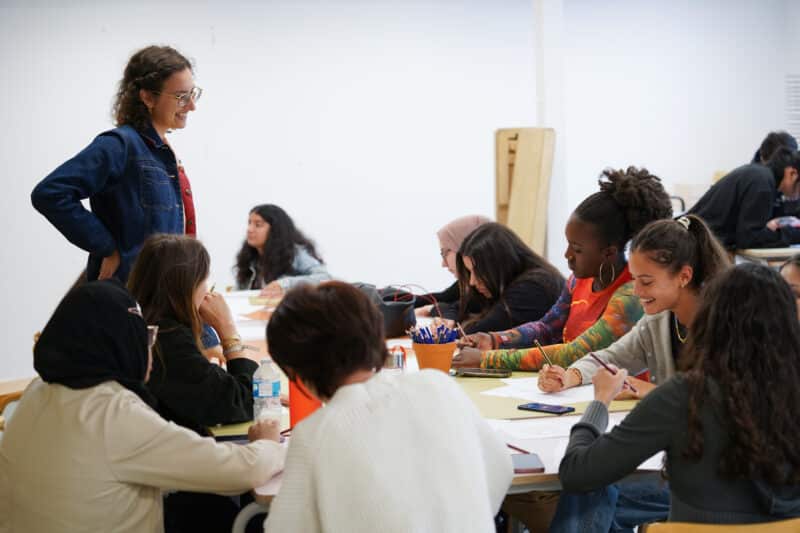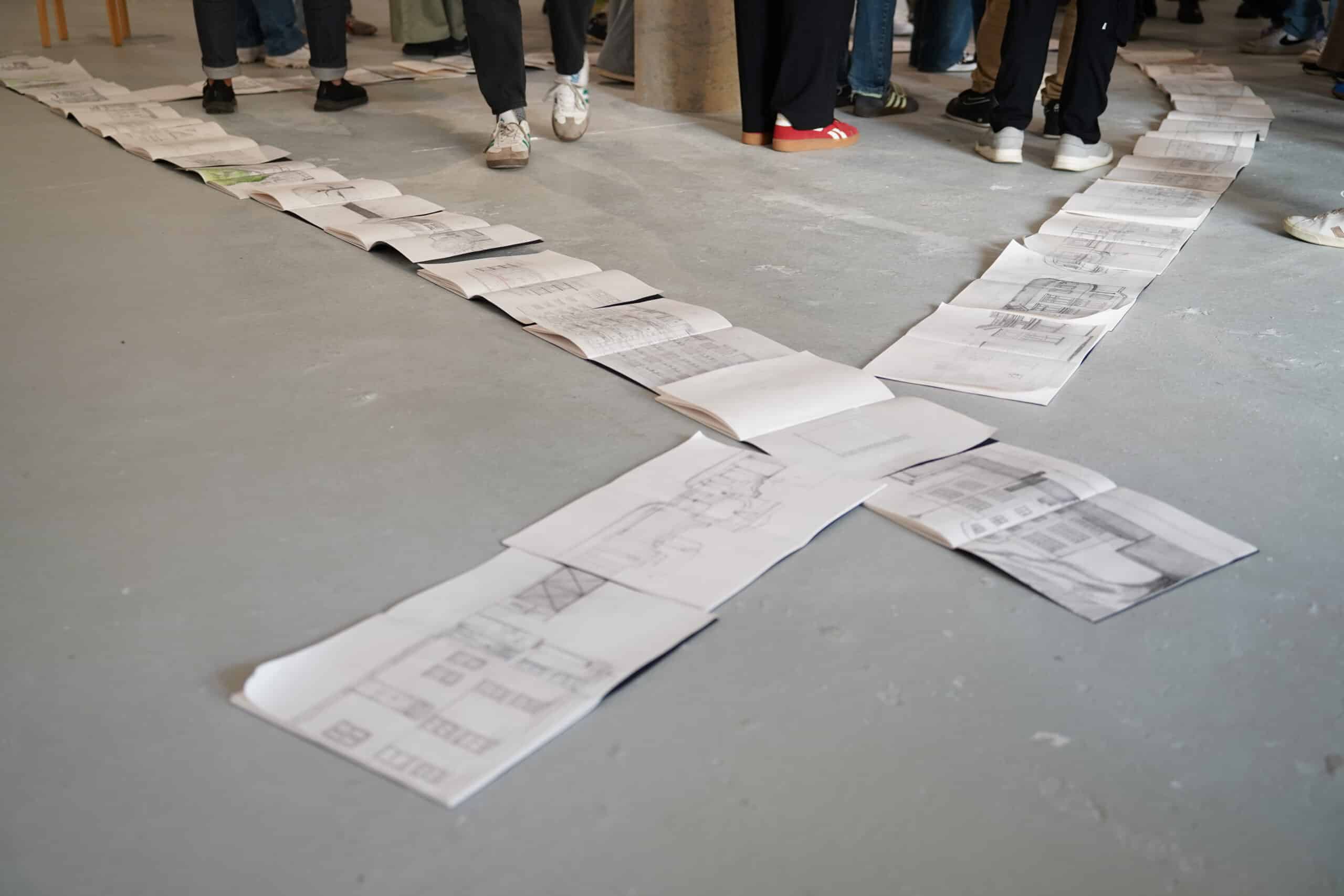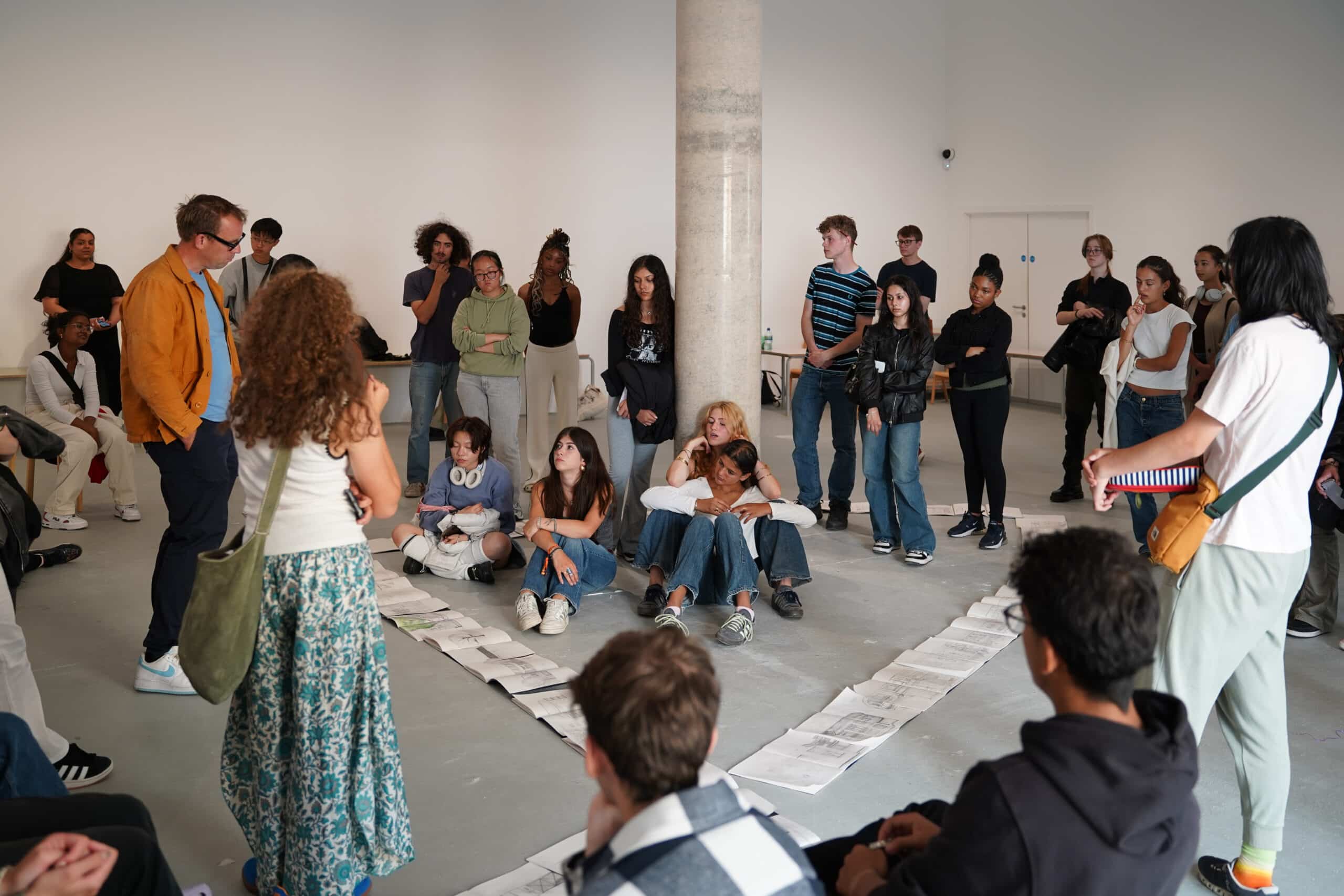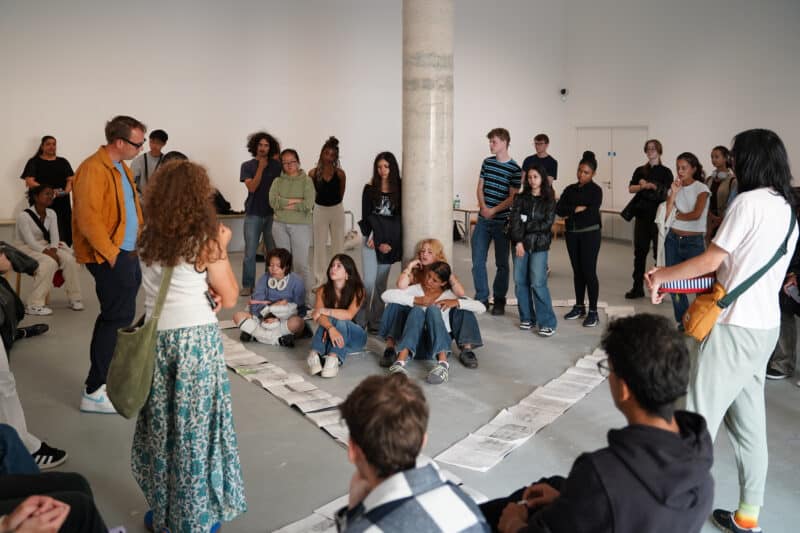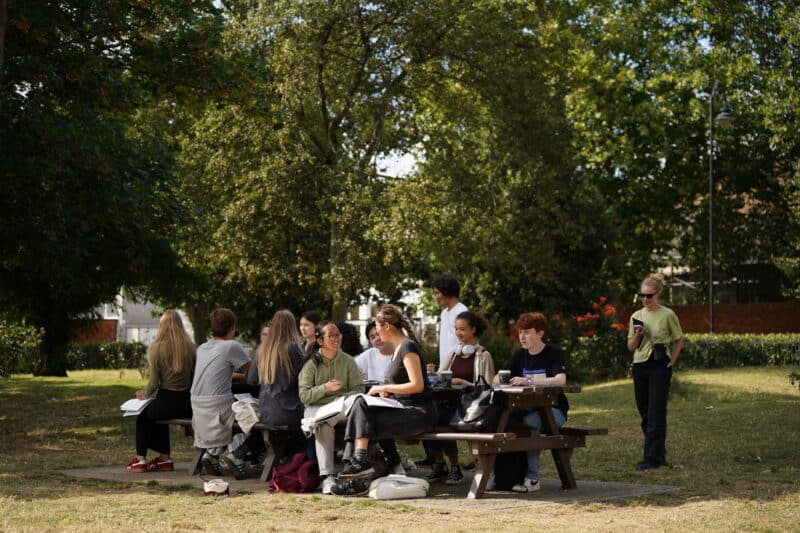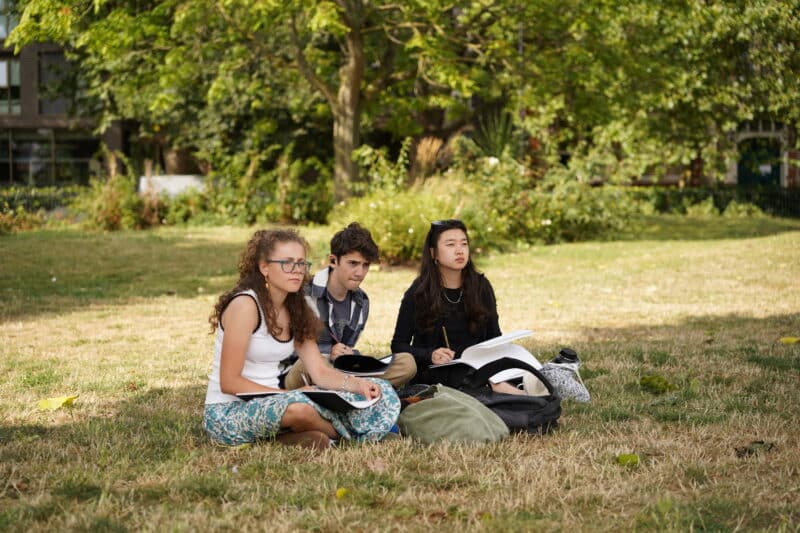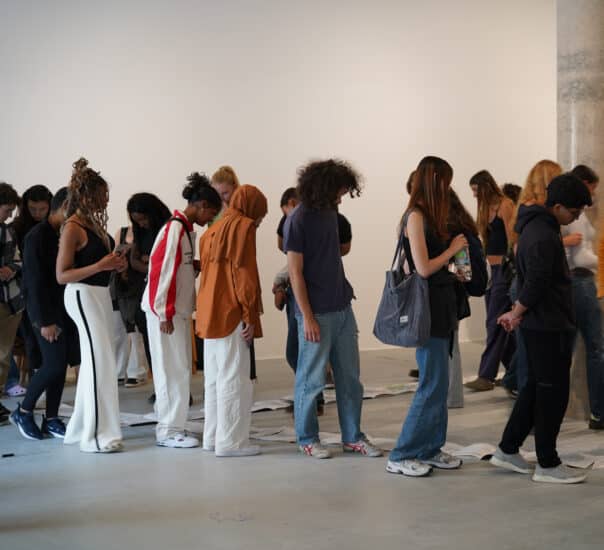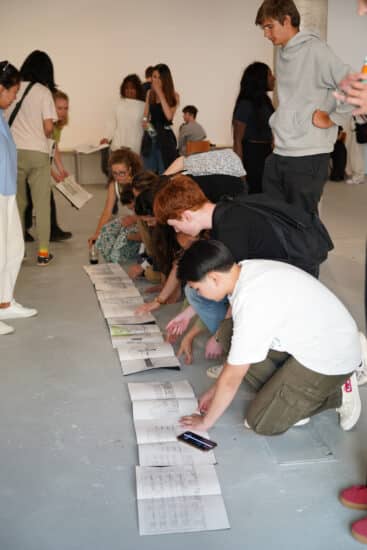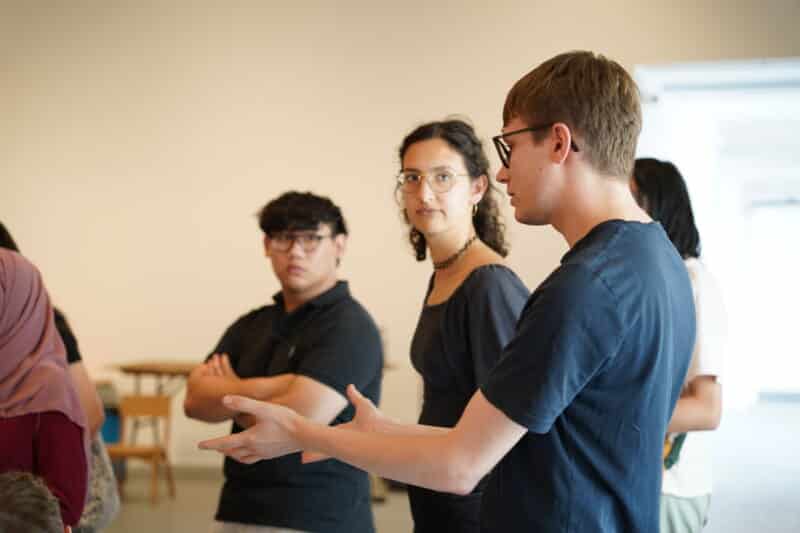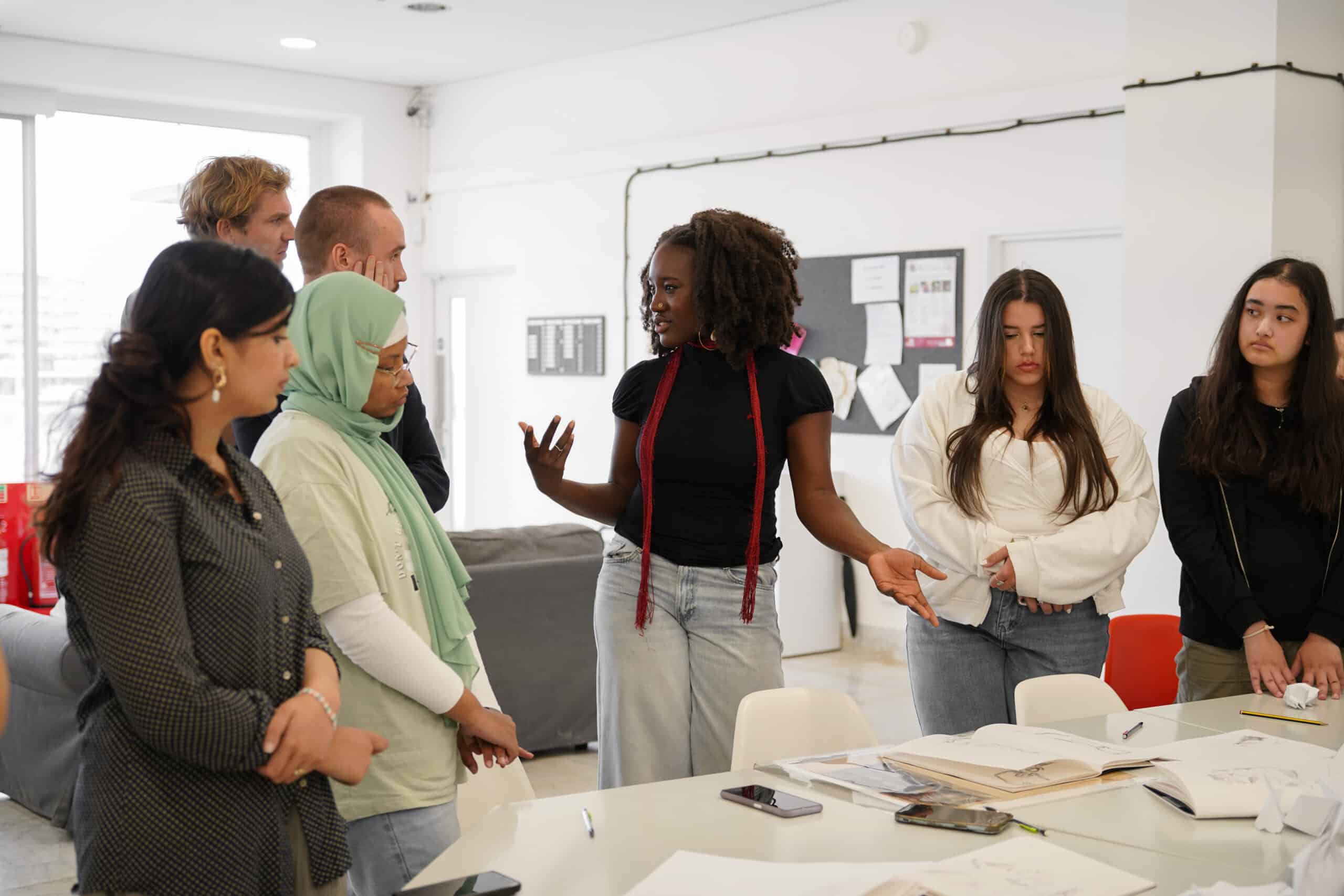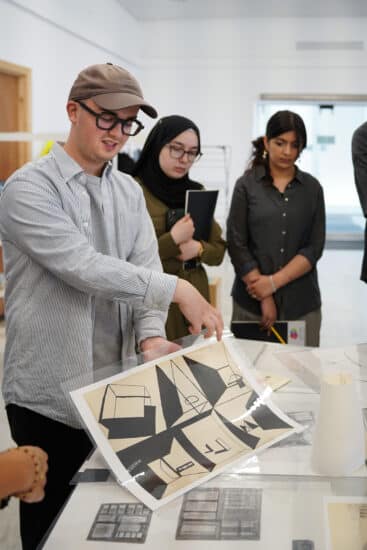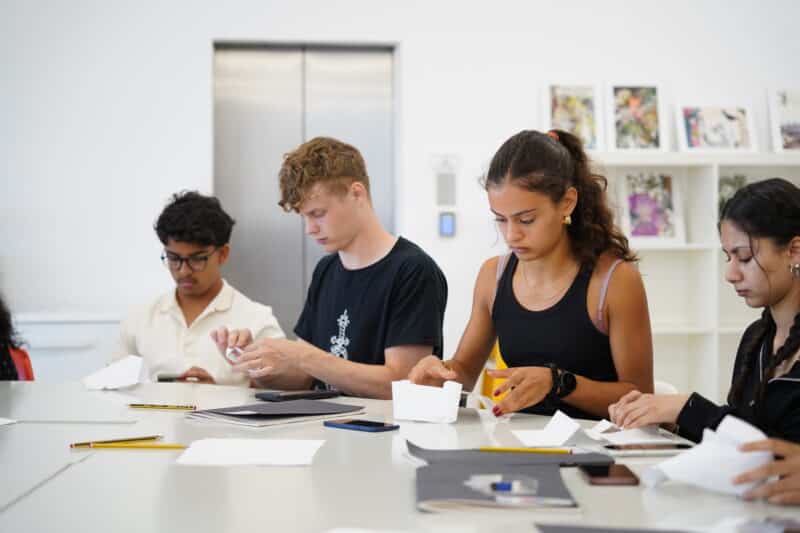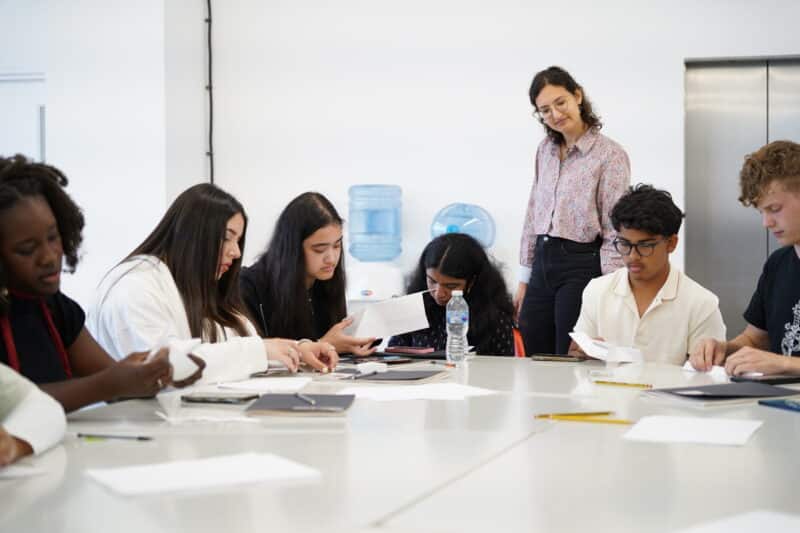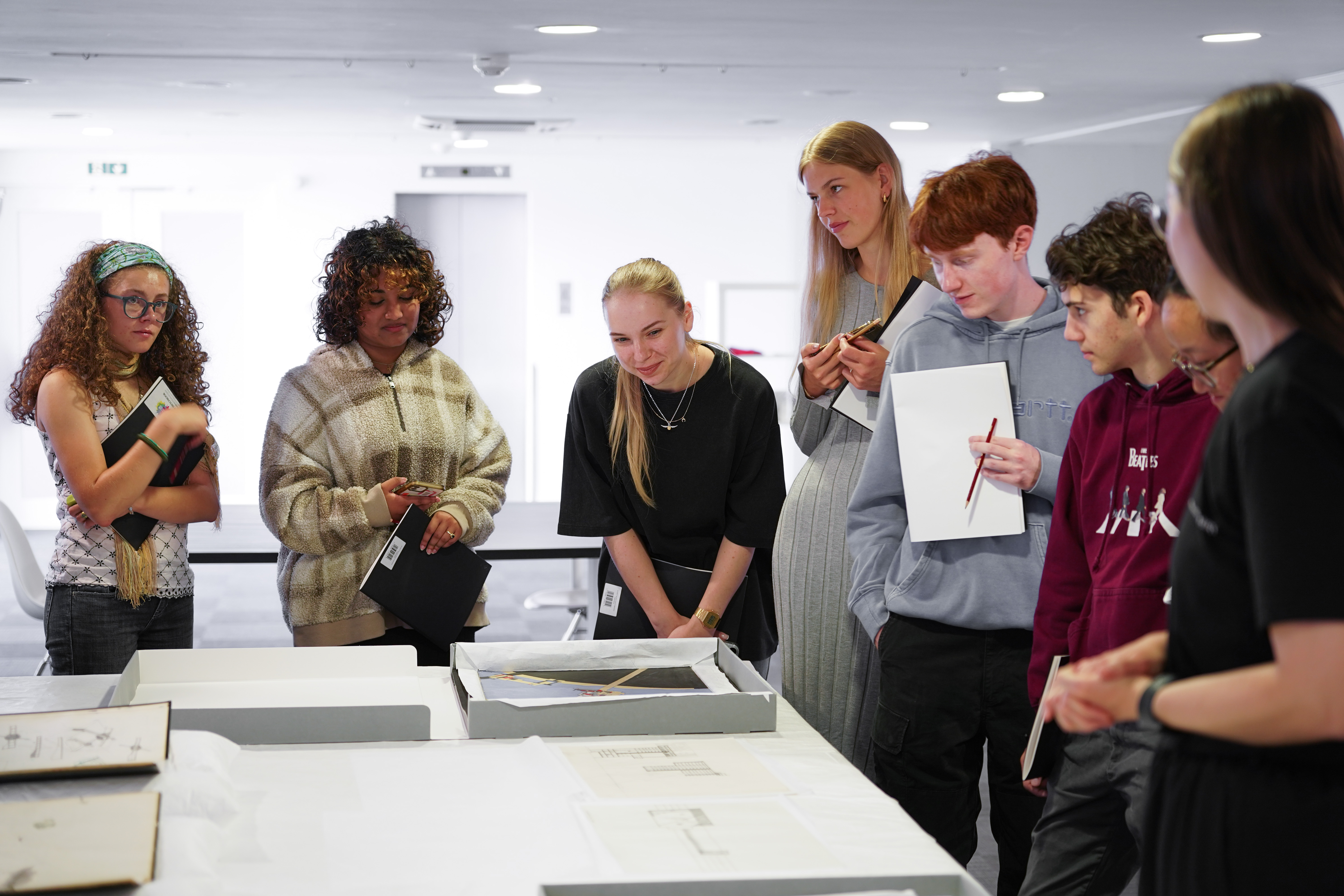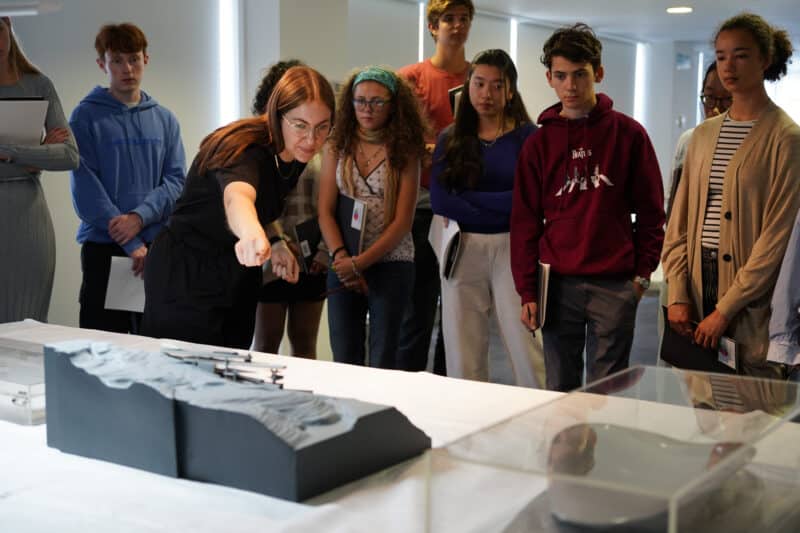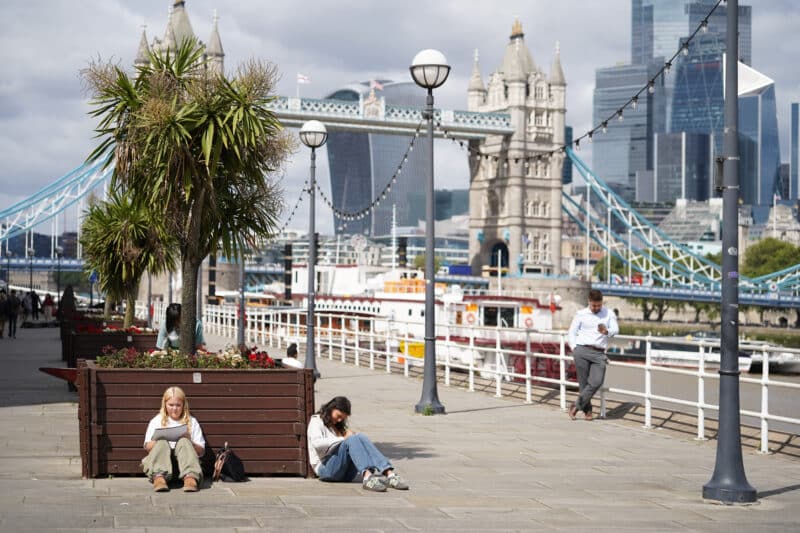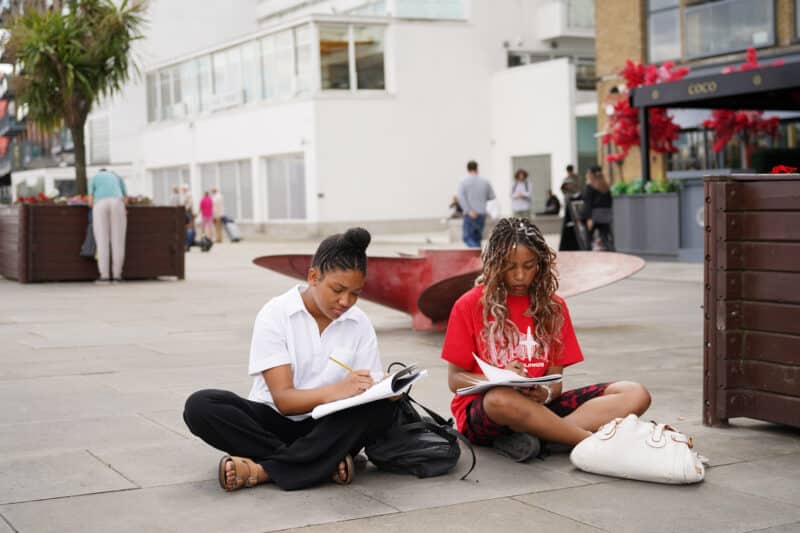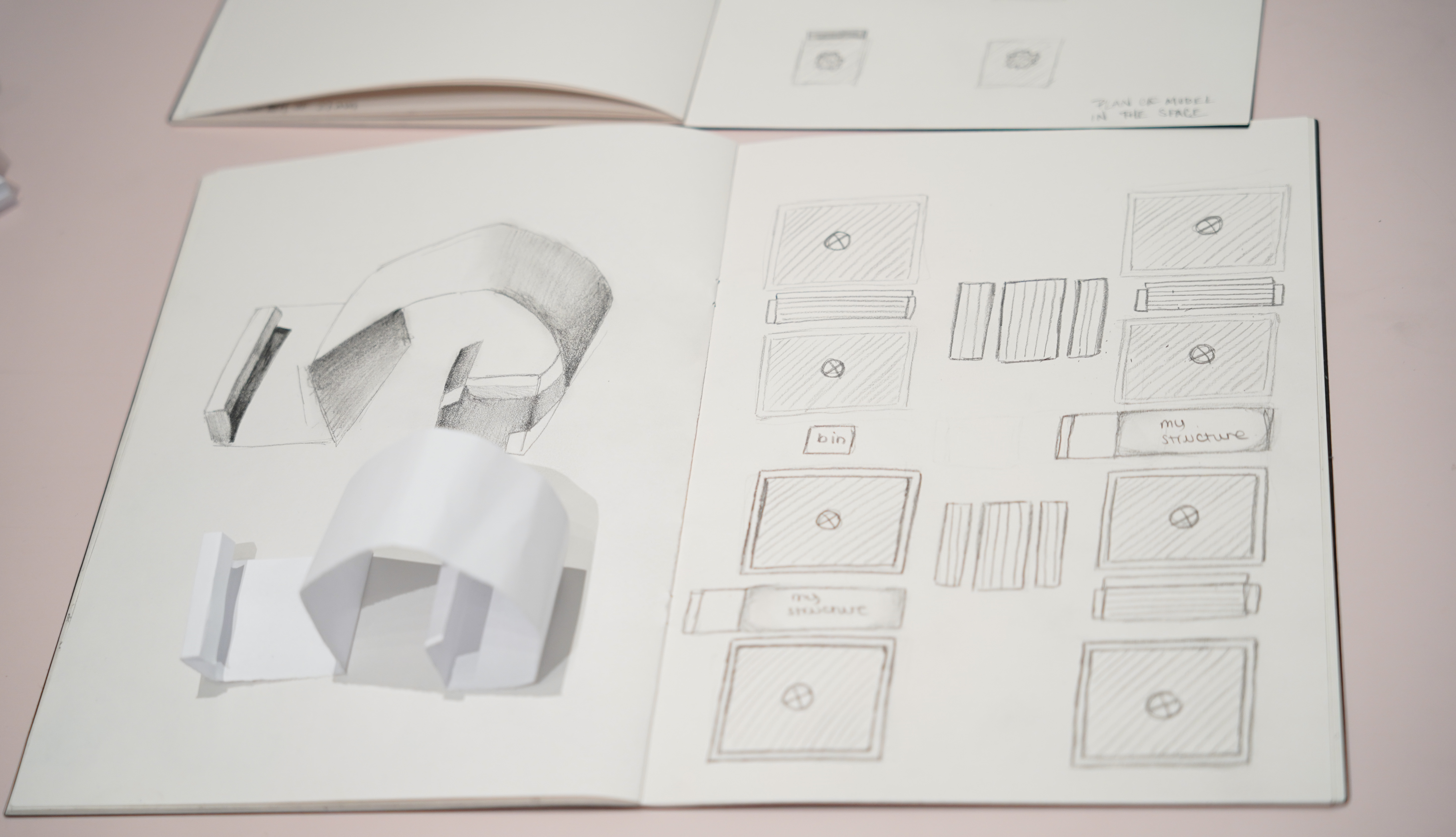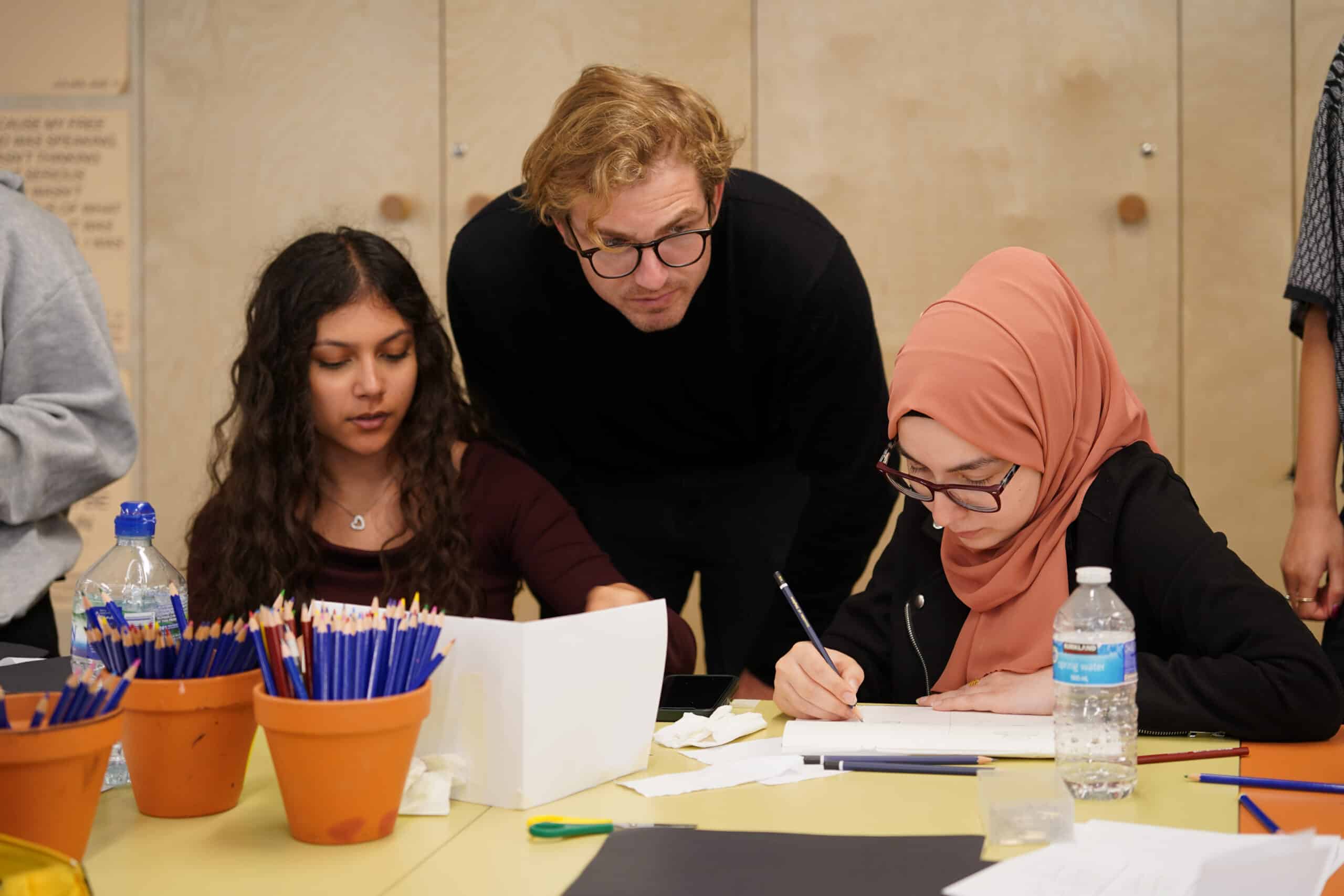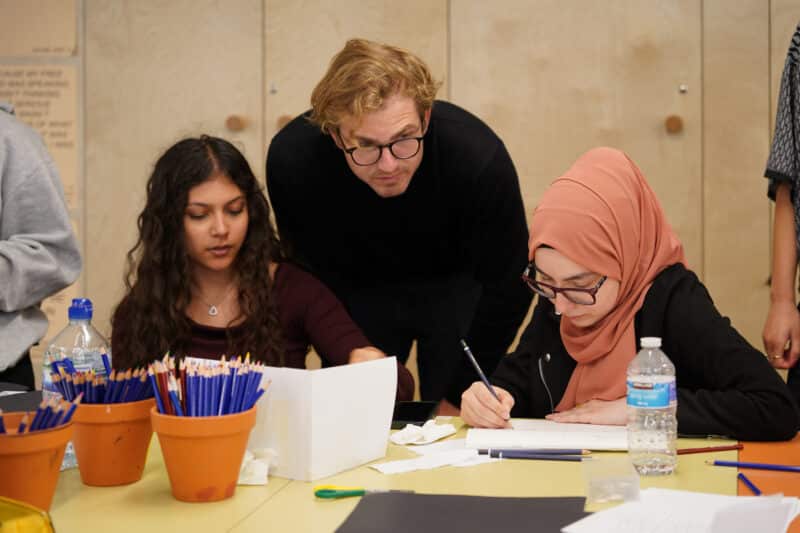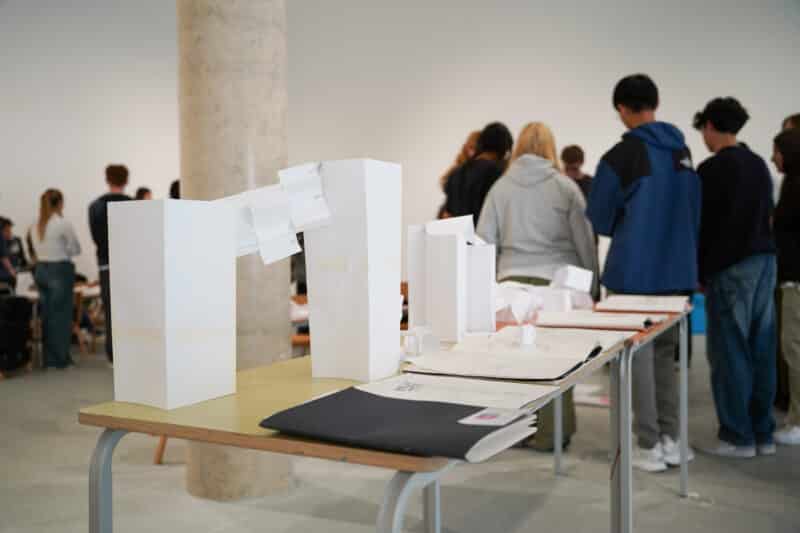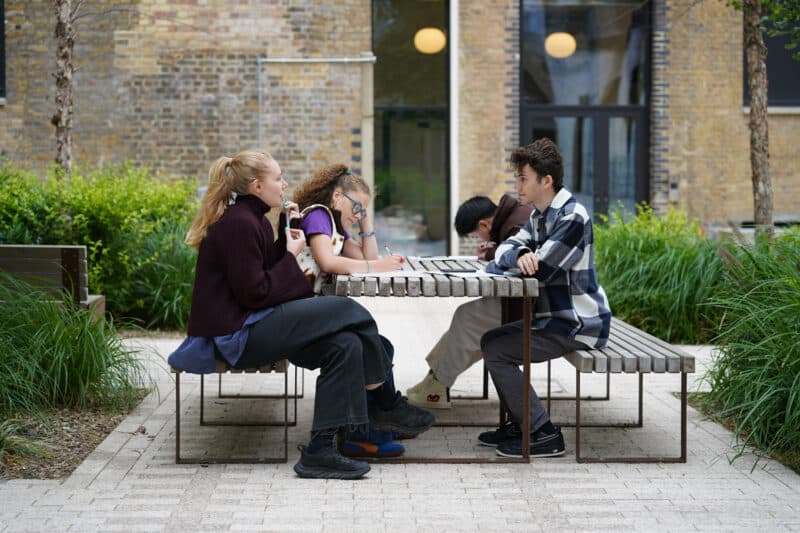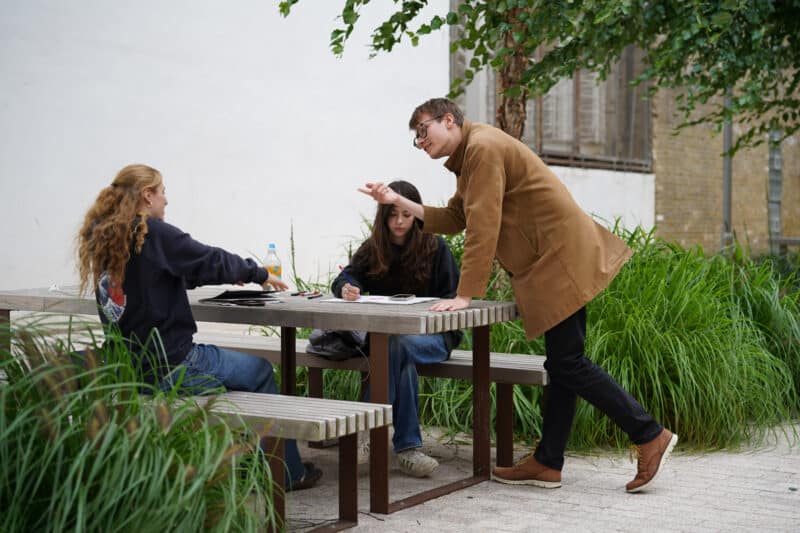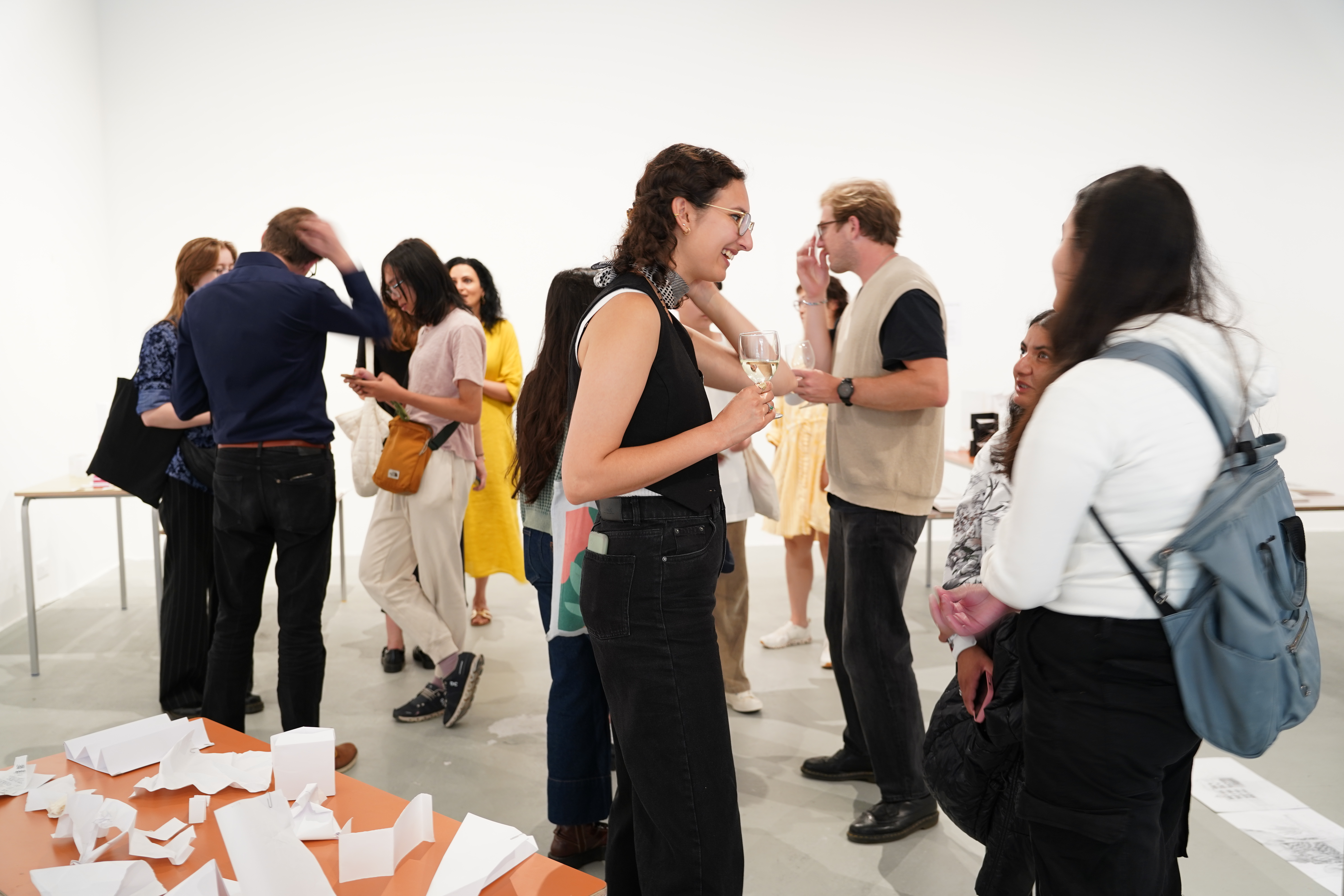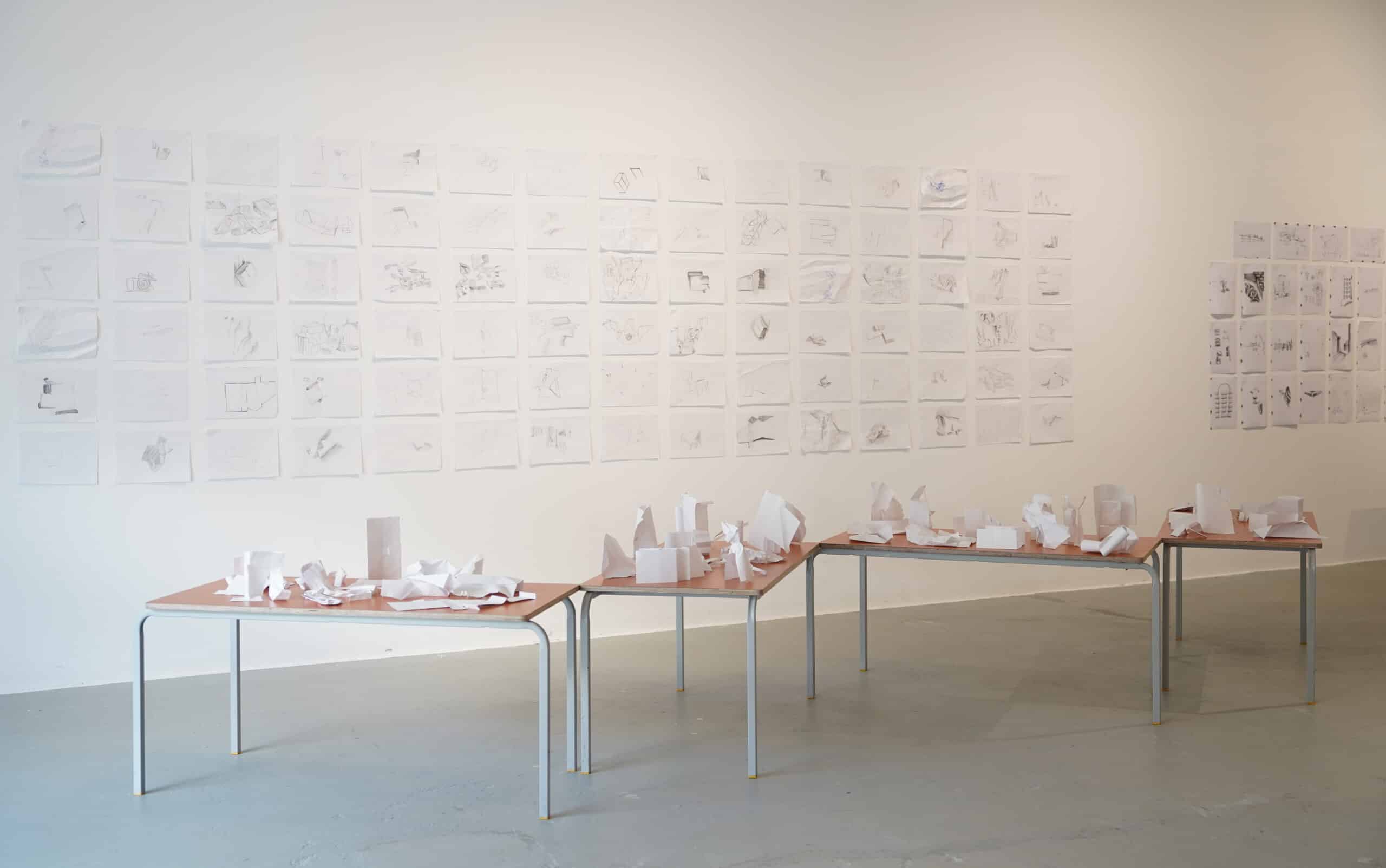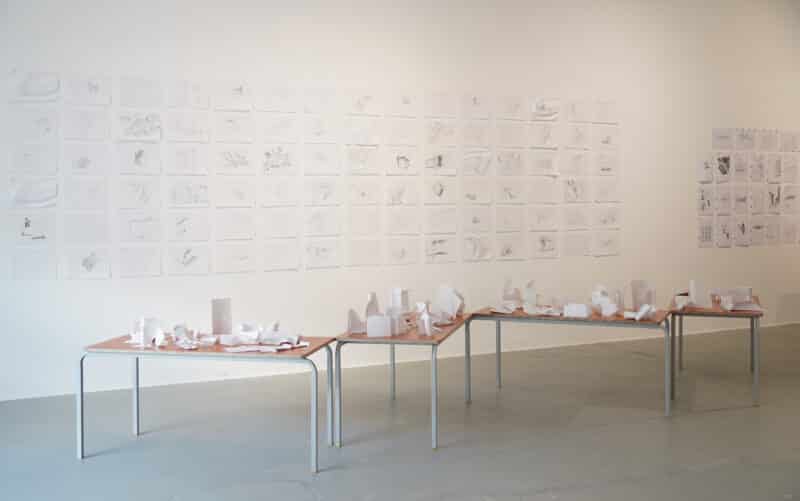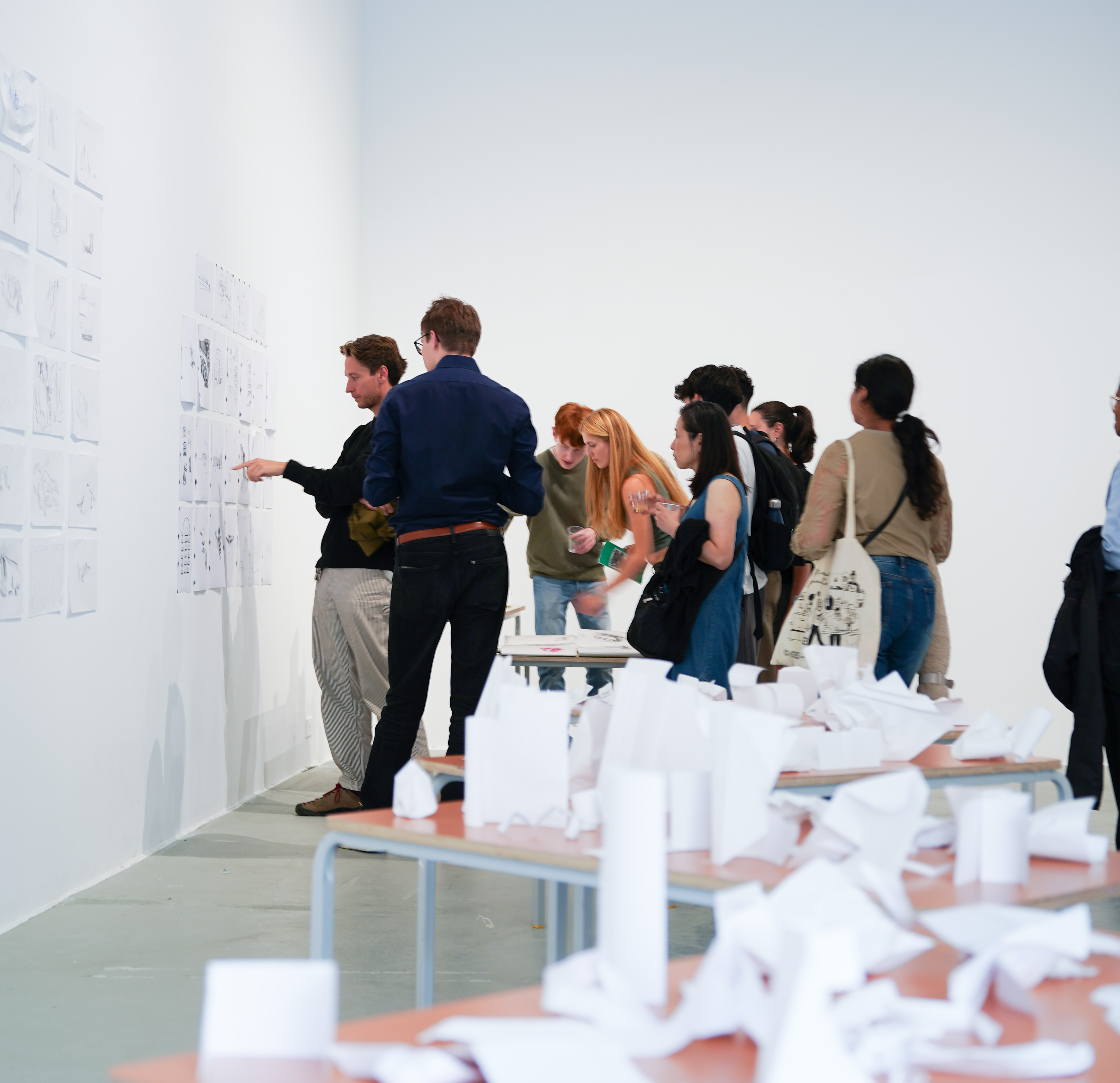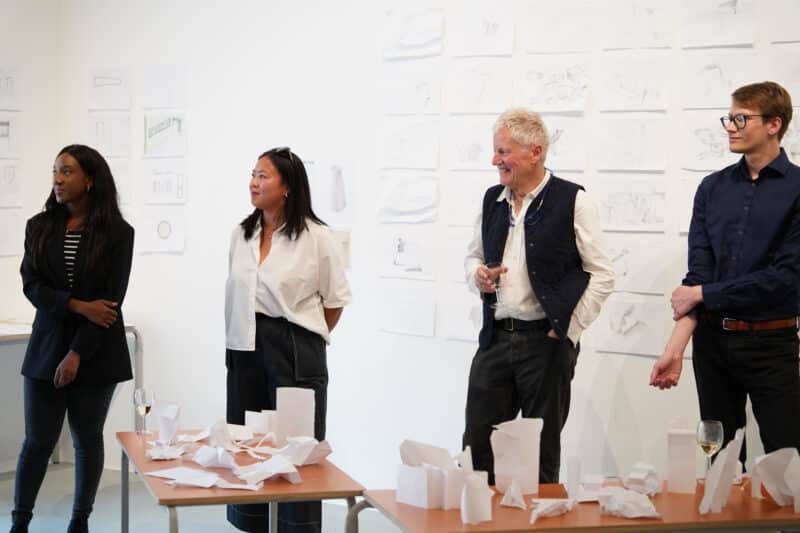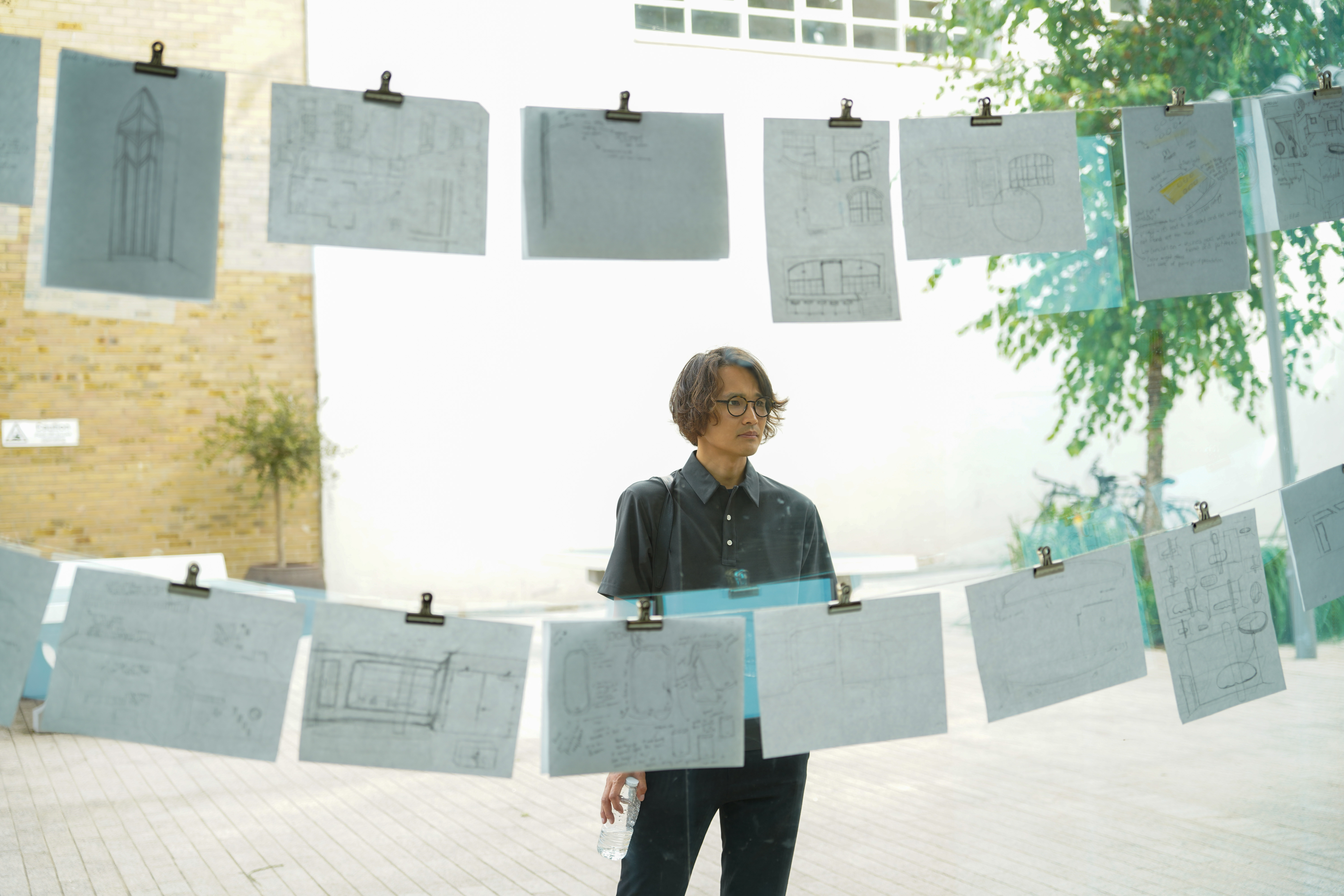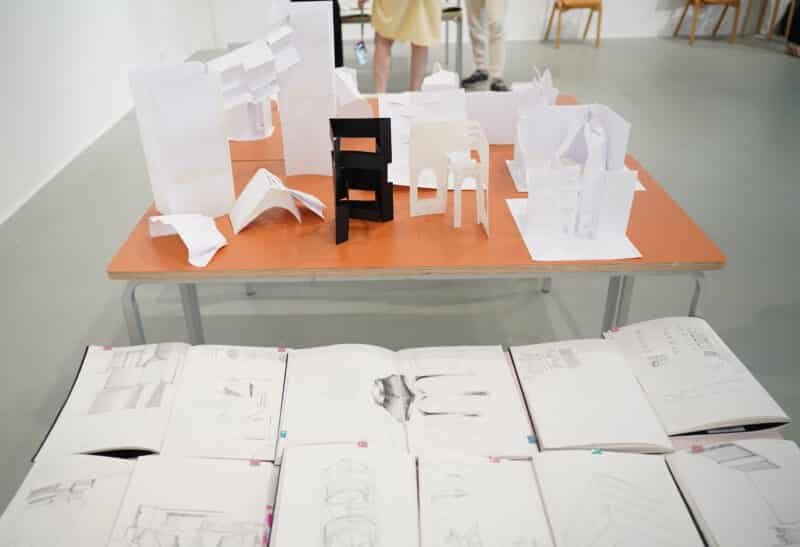Notes on the 2024 Architecture Summer School
– Editors
The Architecture Summer School took place over five days in mid-August, for the first time hosted in London at Drawing Room in Bermondsey SE1. Now in its eight year, the programme is open to any student aged 15 and above who has an ambition to study architecture, with six young architects providing tuition and guidance. This year witnessed a record number of student and tutor applications, drawing a larger attendance from London and beyond than ever before.
The Drawing Matter Trust supports architectural education through workshops, seminars, publications, and short courses. The Architecture Summer School would not be possible without the support of our partners, the Zaha Hadid Foundation, Hauser & Wirth, Kingston University and of many architecture practices in the UK and abroad.
We have gathered together below images, and notes by our tutors, of the activities during the week.
Participants
Anastasia Onishchenko, Anna Migliorini, Anqi Chen, Apyraa Nagularaj, Ben Canning, Ben Bailey, Brandon La, Cherie Ho, Eduardo Salema, Eliza Friend, Emilia Lisowska-Detko, Esme La Trobe-Roberts, Eva Tottenham, Gursimar Singh Kaur, Hamna Jarullah, Hugo Dutson, Iqra Ahmed, Jehan Fadhil, Jennifer Chen, Josephine Moerdijk, Kiran Jaffery, Lance Lau, Leela Dass, Lena Bousquet, Li Anh Nguyen, Lia Janisz, Liberty Marriage, Lola Mei Thompson, Mailo Nelson, Margaret Deng, Maria John, Max Ayroso, Maya Sufaria, Mayah Badoo, Megan Anozia, Nathan Freeman, Nia Laviniere, Nusayba Rahman Amin, Prayag Shetty, Renee Cornwall, Rochelle Philips, Sorya Sayeed, Suhana Karki, Sukhy Kaur, Tommy Marson, Travis Lam, Vania Yordanova, and Oneyejekwe Kia.
Andrew Clancy, Sakiko Kohashi, Maolin Huang, Alexander Turner, Tanatswa Borerwe, Susie Clare Cox, Hiroto Tabata, Leela Keshav, Gregory Devaud, Stella Forde, Matthew Page, Jesper Authen, Julia Kinga Herman, Mariana Elsesser, Mary Doyle, Kate Macfarlane, Wilson Yau, Alan Kirwan, Peter Wilson, and Niall Hobhouse.
We are very grateful to Anna-Rose McChesney for all photography.
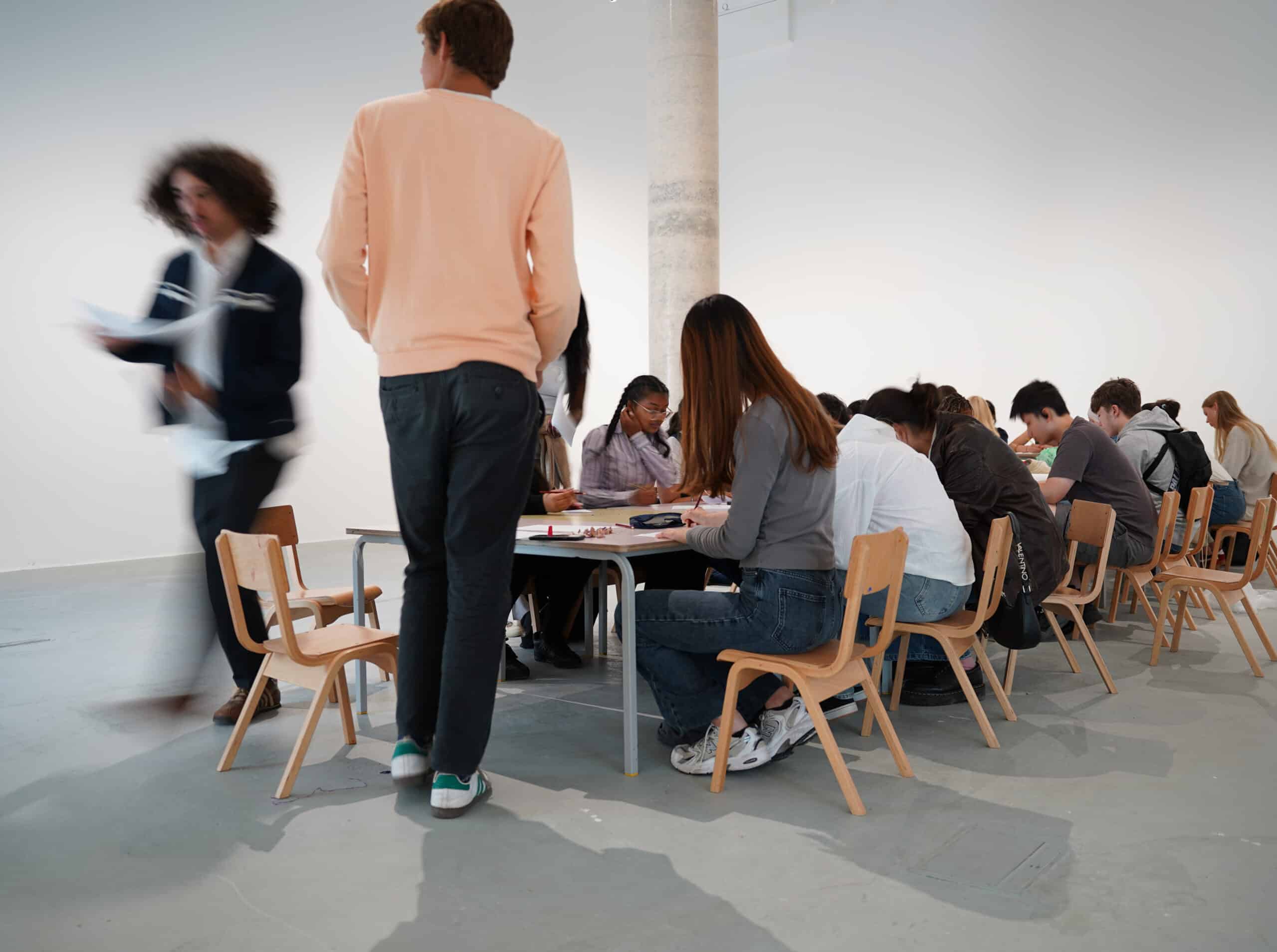
memories.
Day One commenced with a body-knowledge sharing activity. Each participant initiated a unique movement of a body part, which the rest of the group then mimicked. This activity introduced themes of mimicry, observation, and non-verbal communication. Following this, students were asked to use their bodies as units of measurement to delineate the dimensions... Continue Reading
memories.
Day One commenced with a body-knowledge sharing activity. Each participant initiated a unique movement of a body part, which the rest of the group then mimicked. This activity introduced themes of mimicry, observation, and non-verbal communication. Following this, students were asked to use their bodies as units of measurement to delineate the dimensions of their ‘classroom.’ This exercise fostered collaboration as students recreated the classroom space in the courtyard with their bodies.
Seated in a circle, each student began a collective memory drawing, a remembered or imagined window before rotating to their neighbour’s drawing, adding their own artistic contributions. This process cultivated a sense of collective creativity, enhanced communication, and built unity among participants. In the afternoon, the focus shifted to imaginative design. Students conceptualised an additional window in their classroom and presented it to their peers.
objective.
Day Two, we moved our focus to Bermondsey Spa Park. Students explored the streets facing the park, observing the relationship between the buildings and the spaces between before collectively drawing elevations studies. Students communicated with their immediate neighbours to ensure continuity and scale. Each street had a different character, and the students had... Continue Reading
objective.
Day Two, we moved our focus to Bermondsey Spa Park. Students explored the streets facing the park, observing the relationship between the buildings and the spaces between before collectively drawing elevations studies. Students communicated with their immediate neighbours to ensure continuity and scale. Each street had a different character, and the students had to engage with the forms and spaces objectively. We placed a sequence of drawings in the gallery space, forming a collective representation of the park’s boundaries.
The collective drawing exercise became a map, communicating the relationship of buildings around the space held between them. In this way, the drawings of students who were operating on opposite sides of the park were able to form a dialogue with one another as part of a larger exchange. By engaging with the built form objectively, the methods of enquiry and mark making communicate the feel of the space held between these three streets.
subjective.
Day Three, Zaha Hadid Foundation presented students with a selection of Hadid’s drawings and models, including ‘Malevich’s Tektonic’. We then began the Drawing Matter Workshop where students were encouraged students to explore and express the dialogue between 2D and 3D representation. This workshop was Inspired by Tom de Paor’s interpretation of a drawing... Continue Reading
subjective.
Day Three, Zaha Hadid Foundation presented students with a selection of Hadid’s drawings and models, including ‘Malevich’s Tektonic’. We then began the Drawing Matter Workshop where students were encouraged students to explore and express the dialogue between 2D and 3D representation. This workshop was Inspired by Tom de Paor’s interpretation of a drawing by Hans Poelzig. Students made a quick paper model, interpreting a drawing from the Drawing Matter Collections. They then drew the models in different ways before drawing the collection of models as a ‘cityscape’. Read an extended reflection of the workshop here.
In the afternoon we began a subjective drawing exercise, inspired by Peter Wilson’s concertina sketchbook, ‘Euroschaft Derive’, from the Drawing Matter collection. Students mapped their journey through Shad Thames, graphically documenting their subjective perception of the experience. The exercise shows how each student’s individual pursuits, interests and interpretations are recorded through drawing, and how subjectivity contributes to the collective narrative of architecture.
imagination.
Day Four, students were asked to synthesise their learning from the previous exercises in the form of a small design proposal. How can an abstract model inform the design of an enclosure? Following the third day’s paper models that translated a two dimensional drawing from the Drawing Matter archive into a suggestion of... Continue Reading
imagination.
Day Four, students were asked to synthesise their learning from the previous exercises in the form of a small design proposal. How can an abstract model inform the design of an enclosure?
Following the third day’s paper models that translated a two dimensional drawing from the Drawing Matter archive into a suggestion of three dimensional space, students designed an enclosure for two people in Drawing Room’s courtyard. Working in teams of two, they considered how their intervention would affect the existing site in terms of experience, atmosphere, function, aesthetics, and materiality and social urban context. They visualised and presented their proposals using paper models and varied drawing techniques, including plans, perspectives, and vignettes.
Carrying forward themes of memory, narrative, and the body in space, this final exercise can be read as an amalgamation of the diverse discussions held during the summer school.
celebration.
Day Five, students celebrated the work they completed throughout the week. It was a day to reflect on their exercises, showcase their projects, and discuss the outcomes of their learning. Students acknowledged the progress they made, both individually and as a group, and looked forward to applying these lessons in their future work.... Continue Reading
celebration.
Day Five, students celebrated the work they completed throughout the week. It was a day to reflect on their exercises, showcase their projects, and discuss the outcomes of their learning. Students acknowledged the progress they made, both individually and as a group, and looked forward to applying these lessons in their future work.
The day began with an inspiring talk by Peter Wilson, who shared insights from his sketchbook. This was particularly impactful for students, motivating them to further explore their own creative process.
The showcase continued with a discussion led by Niall Hobhouse and Andrew Clancy, whose insights encouraged thoughtful reflection and lively discussion about the projects students developed during the week.
